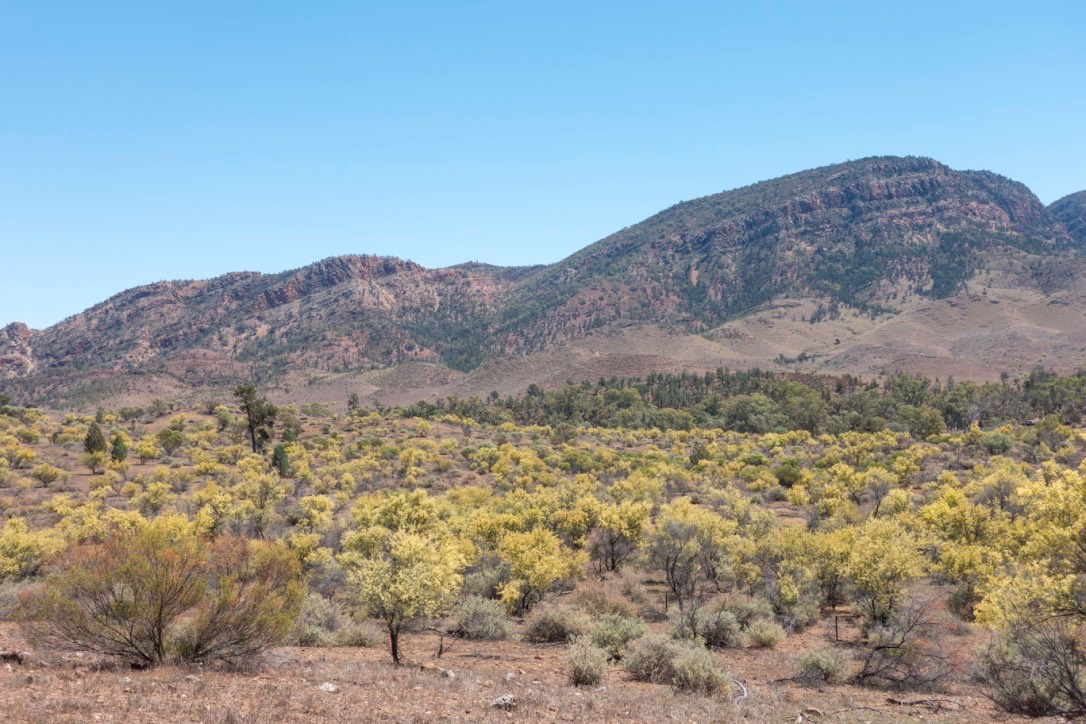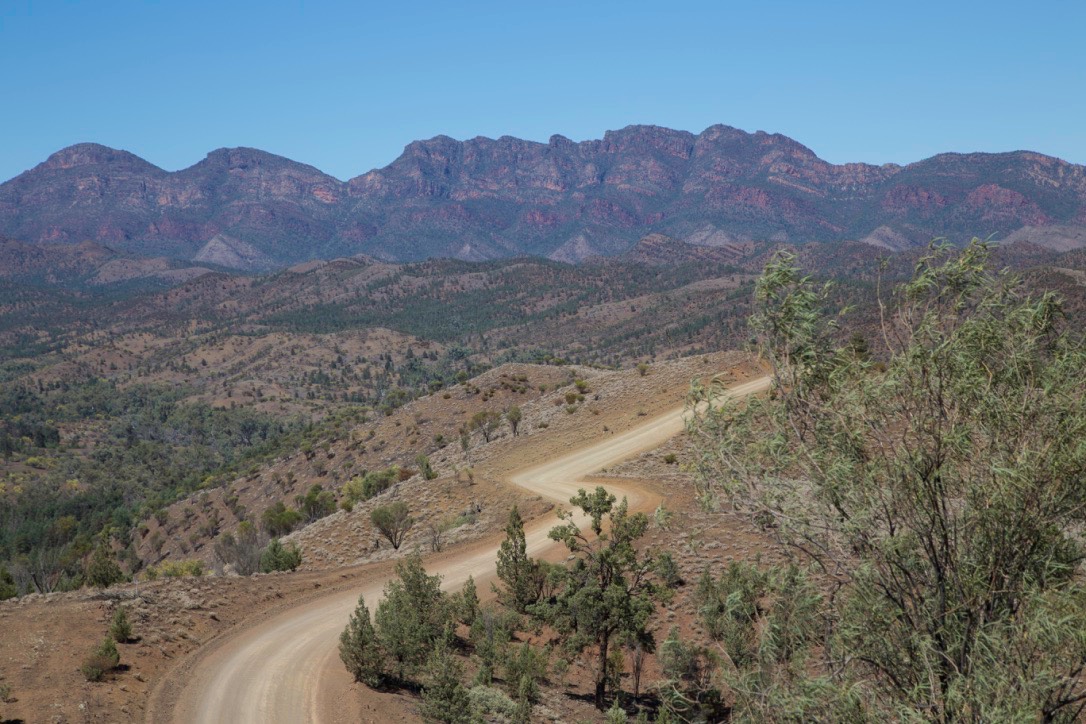
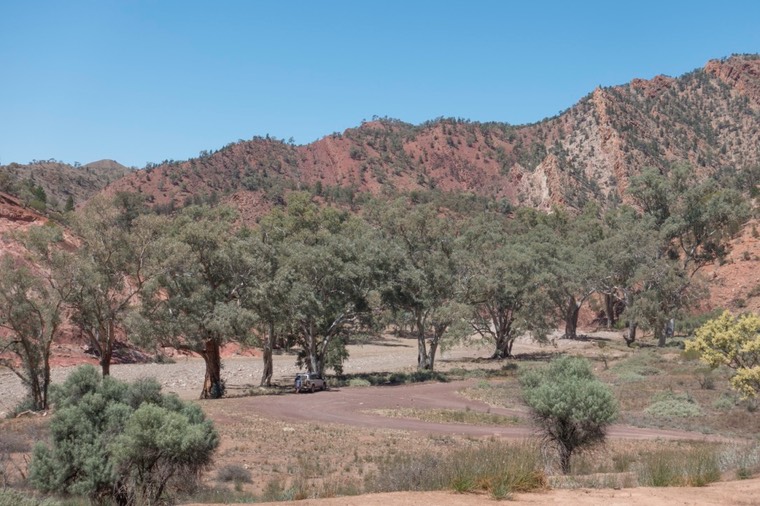
After weeks of rolling along flat, straight roads, this was the first time that we had to pull our caravan uphill again. But it was so worth it!
The Flinders Ranges are the result of million of years of volcanic heat and compression pushing the surface up to Himalayan heights, then by sea ingression, water and wind wearing it all down again to the peaks, saddles and valleys of today.
One of the resulting valleys is Wilpena Pound, a shallow basin surrounded by a circle of mountains.
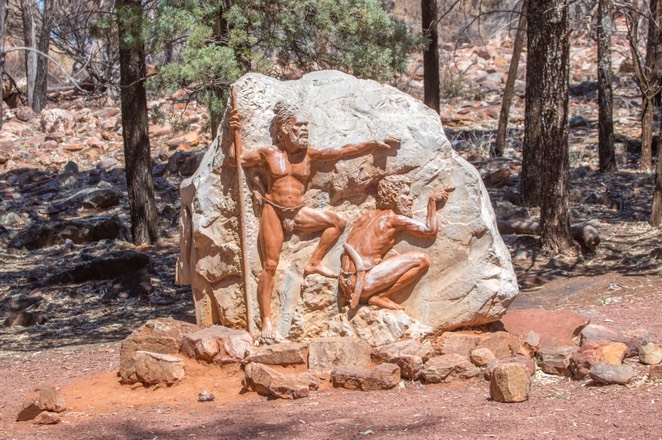
The local Aboriginals call the basin “Ikara”, and their version of how Ikara formed is as follows:
The kingfisher, Yurlu, came in his dream journey to the area to attend a corroboree and initiation ceremony. He lit a big fire which created the coal at Leigh Creek. People were gathered to start the ceremony. Two huge serpents, one male the other female, camped nearby and when the ceremony was on its way, they swooped down and ate the people except of Yurlu and 3 others. The serpents were so full that they laid down on either side of the pound and thus the surrounding mountains were created.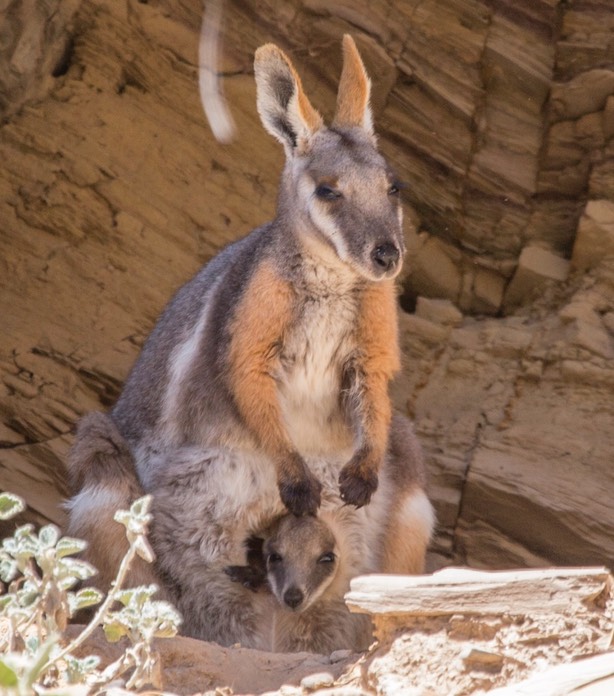
The National Park has a great camping ground and visitors centre in Wilpena with many walks, hikes and drives to choose from. We did some beautiful walks, overlooking the pound and diverse aspects of the ranges. How different the fauna and flora was from what we only saw days before. There was an abundance of grey and red kangaroos and wallabies, all hoping across - while we saw only their dead brothers along the Stuart Highway!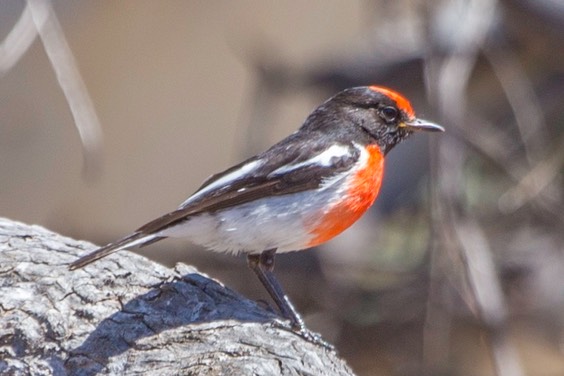
A special favourite of mine is the yellow footed rock wallaby which loves the caves and walls of the Brachina Gorge.
Even the many emus look friendlier here in this protected environment, where everything is done to reverse the damage caused by European settlers over the decades. It’s called “Operation Bounce Back”. A multitude of birds like the ringneck parrots and the red capped robin are also at home in the park. So are goannas and shingle back lizards. Unfortunately there are still rabbits, goats and foxes threatening some species.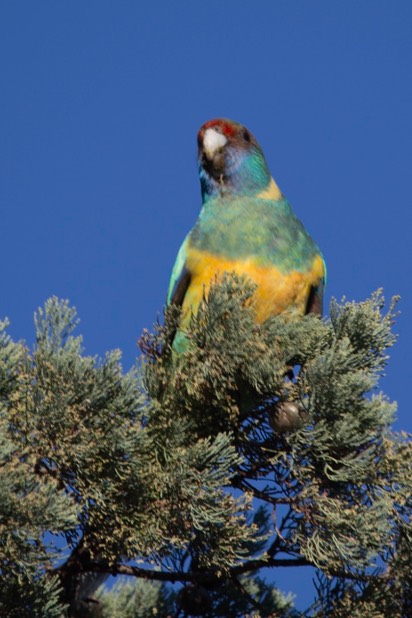
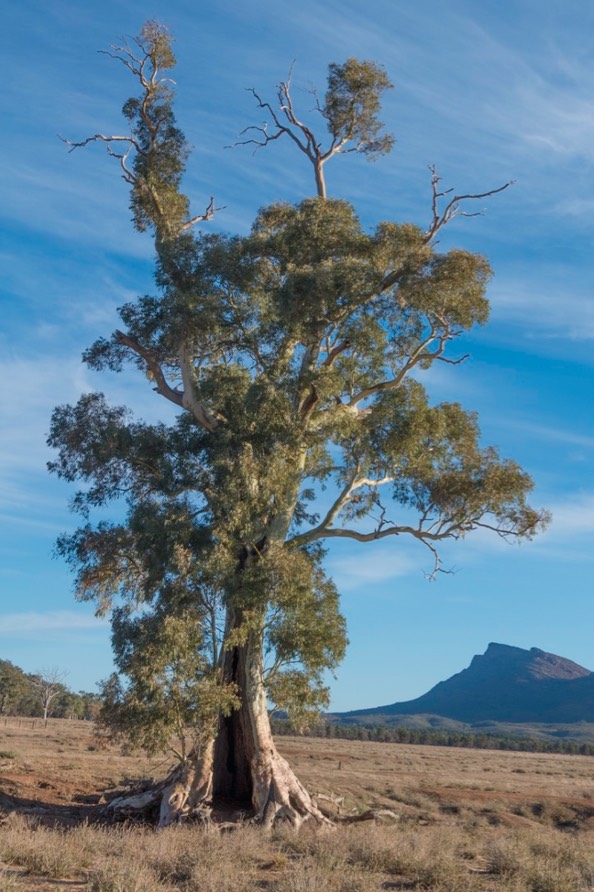
On our drives we really had to dodge the wallabies, kangaroos and emus, nearly all having one or several young ones in tow.
At the Sacred Canyon we had to scale some rocks and got our feet wet to see Aboriginal carvings. We also saw the Cazneaux Tree, called after an apparently famous Australian photographer who called the image of this tree “ The spirit of Endurance”.
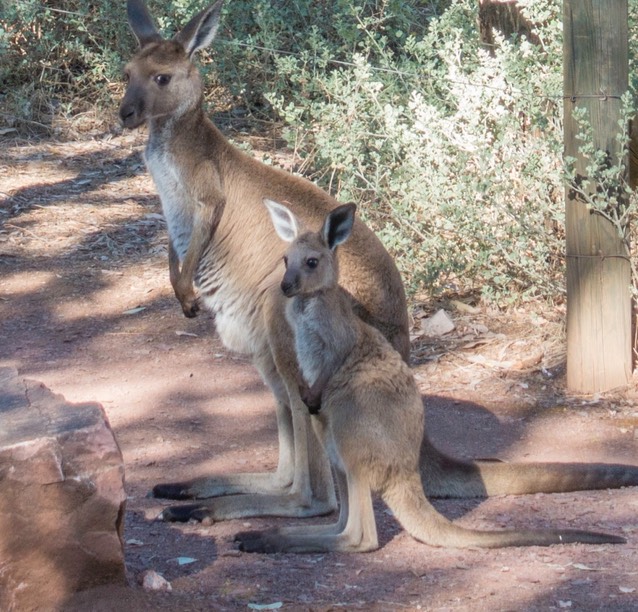
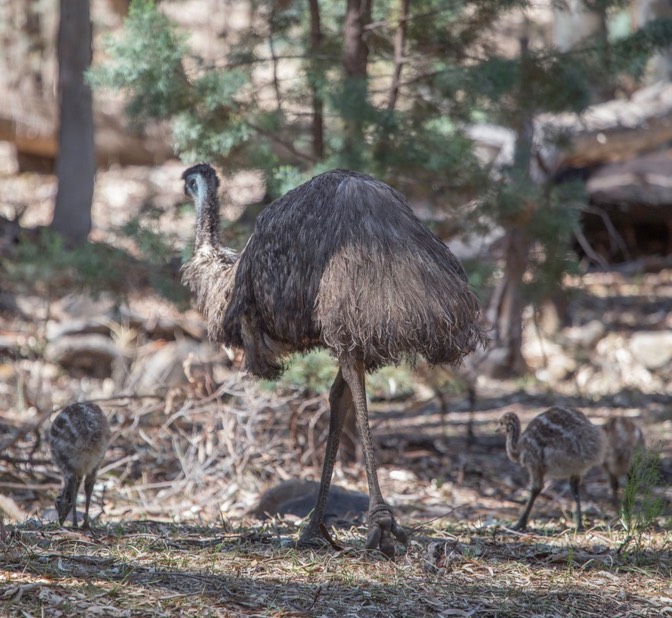
There are many examples of this endurance throughout the local flora: like the red gums letting minor branches dry up until they fall off in order to survive or trees which toppled over in a storm but grew new upright branches.
I loved the fragrance of the native pine trees and the valleys covered in flowering thorn wattle and emu bush.
I could carry on raving about the Flinders, but we are currently in the Clare Valley and Austin insists that we visit a winery!!! Better not disappoint him!
